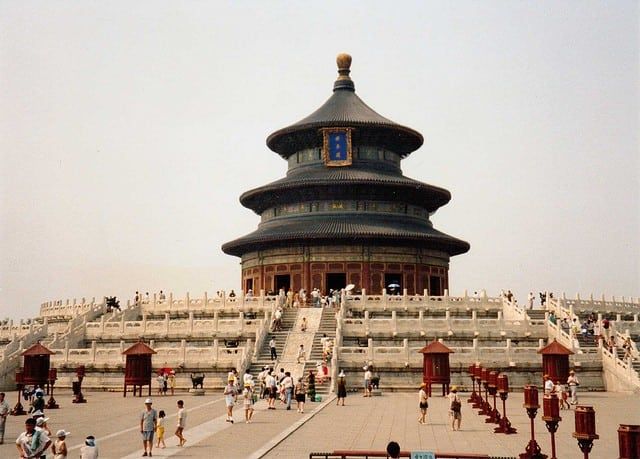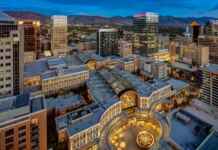Located in the Chongwen District, Beijing, the Temple of Heaven is the largest existing masterpiece among China’s ancient sacrificial buildings. Occupying an area of 273 hectares, the construction of Temple of Heaven began in the year 1420. It was initiated by Ming emperor Yongle in the eighteenth year of his reign. The temple was further enlarged and rebuilt during the reigns of subsequent Chinese emperors. The fundamental premise behind the construction of Temple of Heaven was to symbolize the relationship between earth and heaven, and also the special role played by the emperors in that relationship. Temple of Heaven was finally opened to the public as a park in 1988.
The climate in Beijing is such that the summers are oppressively hot and humid with average temperatures easily rising above 35 degrees. Winter is cold and dry whereas spring is characterized by dust storms. Thus, if you are planning to visit Temple of Heaven, it is highly recommended that you opt for the months of September and October, also popularly nicknamed as “Golden Autumn”.
Temple of Heaven, known as Tian Tian Gongyuan in Chinese was used by emperors annually to worship the God of Heaven and pray for good harvests. The structure of the Temple of Heaven is such that the northern part within the wall is semicircular while the southern part is a square. The semicircle depicts the heavens whereas square in the southern part is representative of earth. This is also why the northern part is higher than the southern part of the temple.
Located in southeastern Beijing, the Temple of Heaven tops in the itineraries of most visitors. An approximately 15 minute drive from the Forbidden City, the Temple of Heaven is best accessed by the main tourist entrance, which is at the south gate or nan men. Visitors should note that though the park is open from 6am-8pm, the sites of religious significance remain open from 8:30am-4:30pm. So it is advisable that you plan your visit accordingly.
Some of the most magnificent buildings of Temple of Heaven include the Circular Mound Altar (Huanqiutan), the Imperial Vault of Heaven (Huangqiongyu) and the Hall of Prayer for Good Harvest (Qiniandian)
Circular Mound Altar (Huanqiutan): Located in the southern end of the temple complex, in ancient times, the Chinese emperors would sacrifice here to Heaven on winter solstice annually. Visitors will notice the recurrence of the number nine, a significant number in Chinese cosmology, in and around the Circular Mound Altar. Also, it is considered lucky to stand on the center stone of this temple complex.
Imperial Vault of Heaven (Huangqiongyu): The major attractions for tourists here includes Echo Wall, Three Echo Stones and the Dialogue Stone, all premised on the theory of sound wave.
The Hall of Prayer for Good Harvests (Qiniandian): 38 meters high and constructed with marble on three levels, this complex happens to be the earliest building of the Temple of Heaven. As the name clearly suggests, this is the spot where ancient Chinese emperors held the worship ceremonies to pray for good weather to facilitate harvests.
Cypress Grove: Home to over 60,000 varieties of Cypress trees, the Cypress Grove will turn out to be a major highlight of your visit to the Temple of Heaven. The most famous tree here is the grandfather tree – a 500-year-old Nine-Dragon Cypress.










